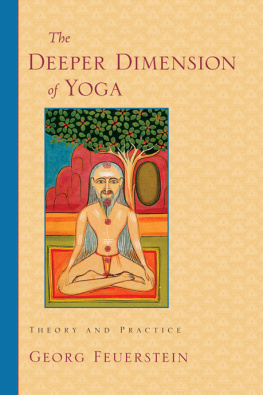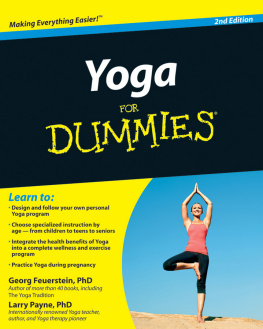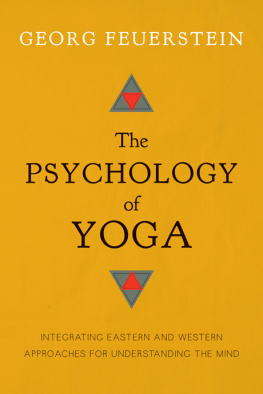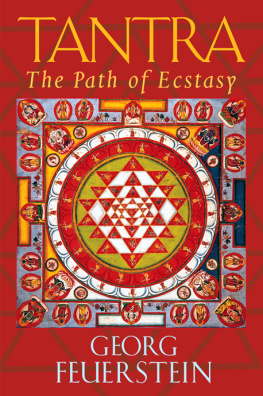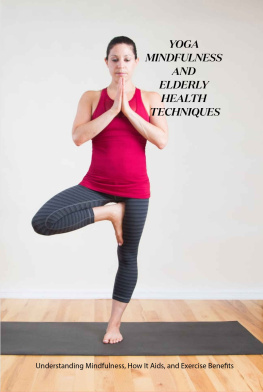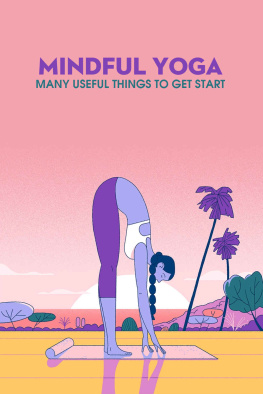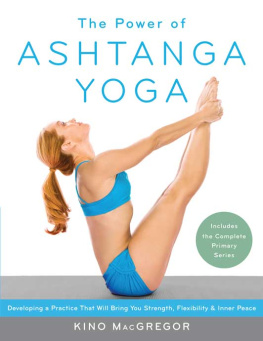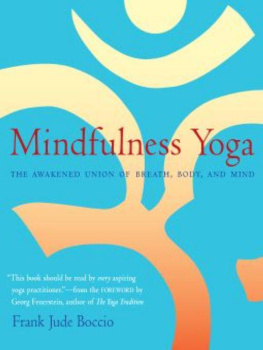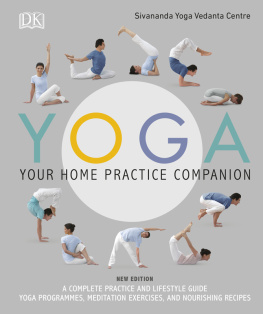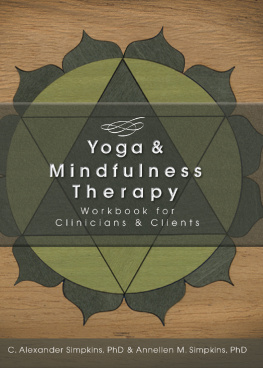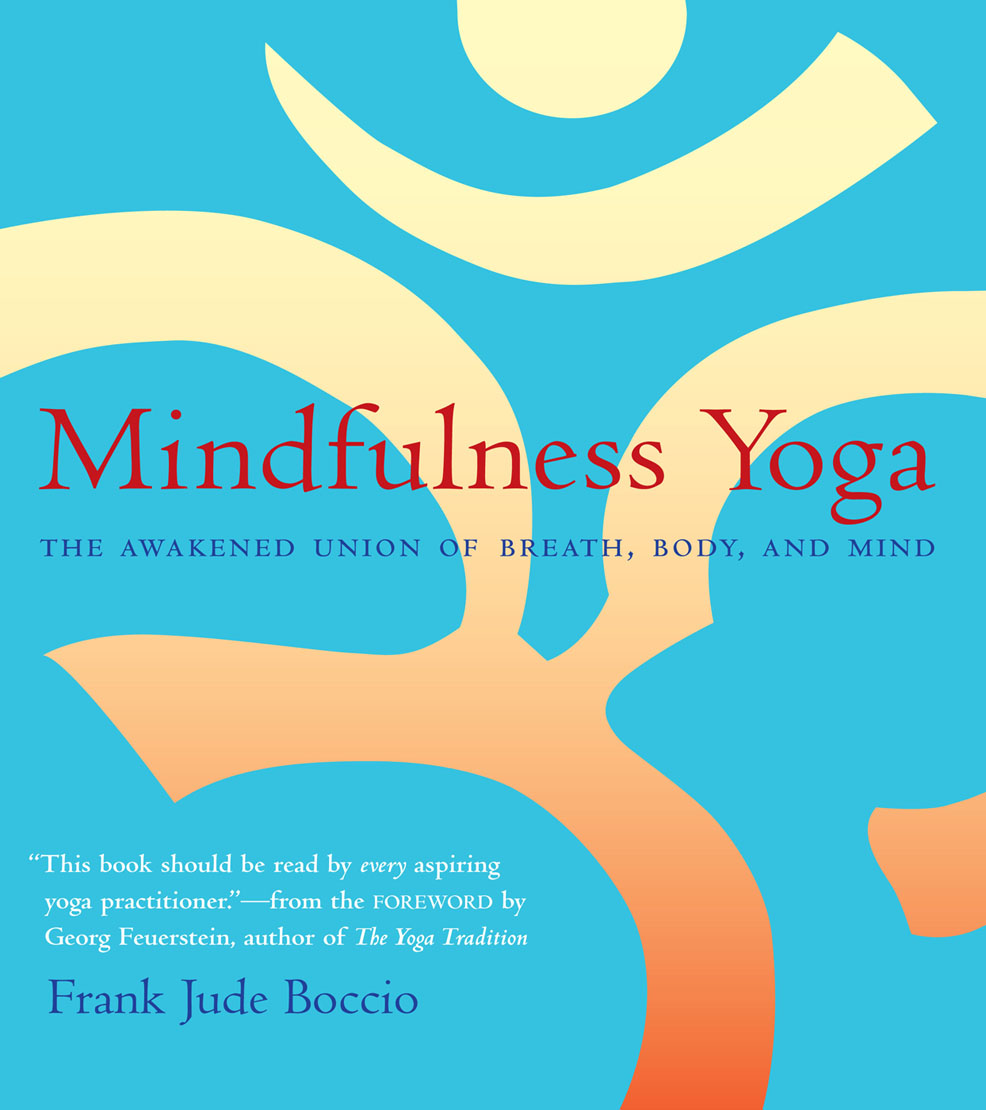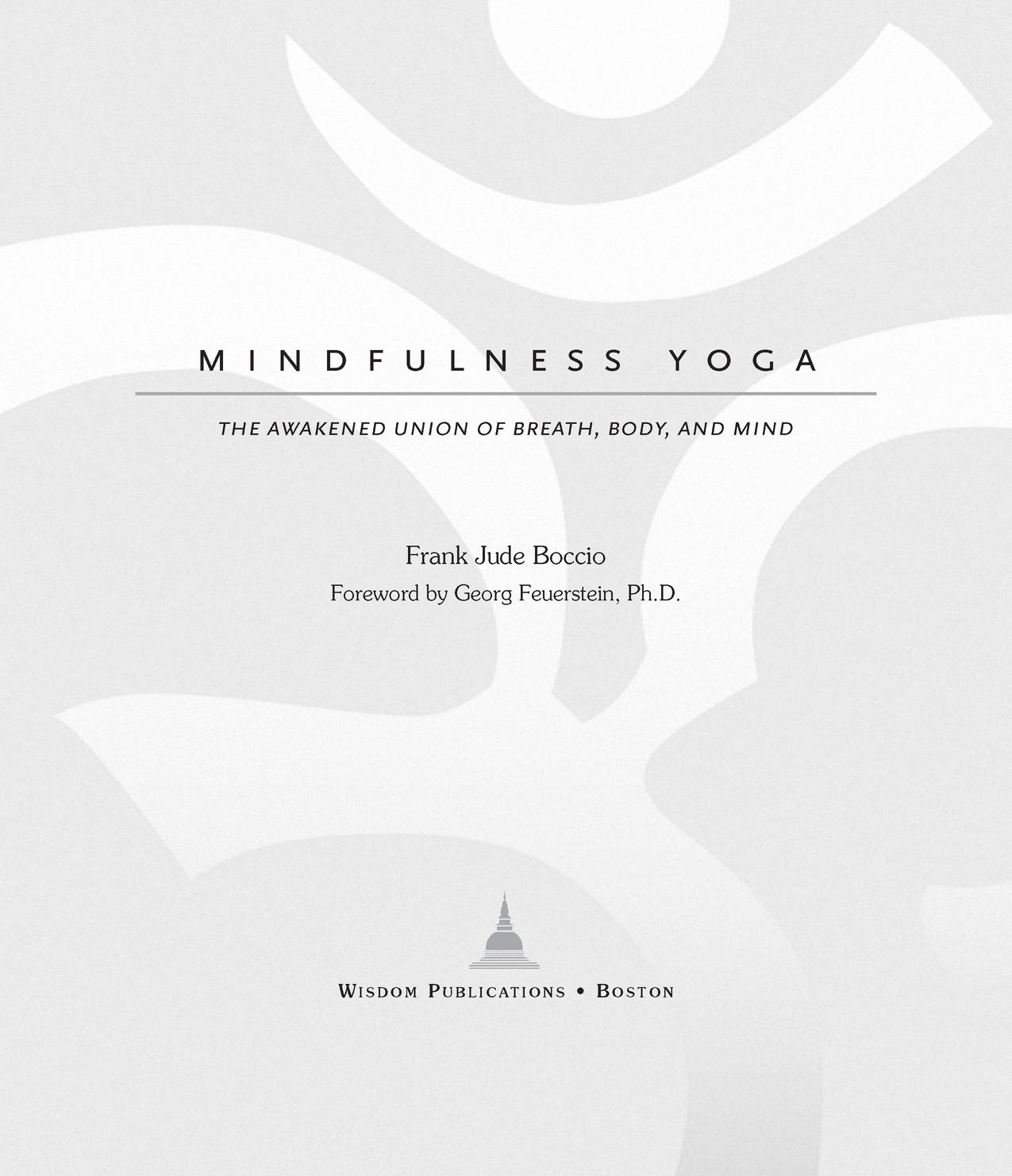CONTENTS
With breath, body, and mind
I send my heart along with these words.
May all who read them awaken from forgetfulness, and,
realizing the true nature of no separate self,
transcend the path of fear, sorrow, and anxiety.
May all beings be free.
PUBLISHERS ACKNOWLEDGMENT
The Publisher gratefully acknowledges the generous help of the Hershey Family Foundation in sponsoring the publication of this book.
FOREWORD
I LIKE TO KEEP INFORMED about my various fields of interest, especially the yoga tradition, but few of hundreds of publications that cross my desk each year succeed in holding my attention for long. Now and then, however, the weekly influx of books and manuscripts includes a work that is truly worthwhile and captivates me. Frank Jude Boccios Mindfulness Yoga is such a work.
I am happy about this for two reasons. First, this book addresses a subject matter that is important and timely, and second, I have had the pleasure of Frank Judes recent participation in the first seven-hundred-hour teacher-training program offered by Yoga Research and Education Center. His quiet presence, unobtrusive service, and thoughtful observations contributed significantly to the quality of our program, and I have since come to value him as a heartfelt Dharma brother. When he asked me to write this foreword, I happily agreed to do so.
It makes sense in a foreword to a book such as this to begin with some personal remarks. When, at the age of fourteen, I discovered the incredibly rich world of yoga, I knew I had found my spiritual home. Three or four years later, it became obvious to me that I should and indeed would dedicate my personal and professional life to exploring yogas ancient heritage. I wrote my first bookon yoga, of courseat the age of nineteen, and since then have authored many more on this and related subjects. At that time, I also encountered Buddhism for the first time and was impressed with the formidable clarity and perceptiveness of the Buddhas Dharma and came to hold Buddha and his teaching in the highest esteem. Yet I turned to Hindu yoga for my practice and study, because I felt that it would be more accessible for a budding scholar/writer/practitioner like myself.
In the early 1970s, after having worked intensively with Hindu yoga, I translated a couple of books on Buddhism from English into German and vice versa. It was not until 1994, however, that I encountered more incisively the world of Buddhist yogain theory and practicein the form of Tibetan Vajrayana. From that moment on, I have thought deeply about the relationship between Hindu and Buddhist spirituality, which also is one of the focal points of Frank Judes work.
In my view, Hinduism and Buddhism are not so much religions as great cultural complexes born on the Indian subcontinent that have yogic (spiritual) practice at their core. Hence it is appropriate to speak of a Hindu yoga and a Buddhist yoga. In fact, Vajrayana Buddhism presents itself openly as a form of yoga and, like Hinduism, occasionally even calls its male adepts yogins (or in Tibetan, naljor ) . Thus the contemporary distinction between yoga (generally narrowly understood to be posture practice) and Buddhism is a false and unconstructive dichotomy. Without blurring the differences between Hindu and Buddhist spirituality, it makes sense to apply the label yoga to both of them. This has the advantage of emphasizing important common ground between them, not least in the dimension of moral practice but also in the higher stages of the path. I was happy to notice that Frank Jude, a Buddhist yoga practitioner like myself, has adopted a similar viewpoint.
For over thirty-five years, my focus has been on building bridges between India and the Westbridges across which fellow Westerners could travel to gain greater access to Indias marvelous wisdom teachings. Few people know that yoga began arriving at our Western shores since the time of the ancient Greeks; and since the epochal presentations by Swami Vivekananda at the 1893 Parliament of Religions in Chicago, the migration of Indian wisdom into Europe, America, and also Australia and New Zealand has been steadily accelerating. Today we have the curious phenomenon of highly skilled Western teachers returning the gift of yoga (at least in the form of the postures of hatha yoga) to Indias middle classone of the signs of a growing coalescence between the global hemispheres.
Buddhist yoga was also represented at the Parliament of Religions, in the noble figures of the fiery Ceylonese Anagarika Dharmapala and Japanese Zen master Soyen Shaku among others. The latter, incidentally, had for his translator the young D. T. Suzuki, who was destined to become one of the spiritual heroes of the mid-twentieth century. Both masters subsequently succeeded in attracting a sizable American following and in doing so prepared the ground for the open-armed reception in America and other Western countries of Tibetan Buddhism in the aftermath of the Chinese invasion of Tibet in 1950. Today there are said to be some two to three million Buddhist practitioners and as many as fifteen to twenty million yoga practitioners in the United States alone. As for the latter group, most of its members understand and practice yoga as a health and fitness regimen rather than for inner growth and spiritual upliftment.
There is, however, an encouraging trend to engage yoga more seriously, that is to say, as a lifestyle that embraces the high spiritual ideal of self-transcendence and spiritual awakening. Yoga is a potent transformative discipline and, if practiced authentically and with the requisite dedication, it can bring about inner change even at the entry level of posture practice that is the focus of the majority of its Western practitioners. By activating the parasympathetic nervous system, the hatha yoga postures (asanas) canand have traditionally been intended toserve as portals to the spiritual aspects of the yogic process. They introduce practitioners to the experience of deep relaxation, especially when combined with conscious breathing, and from there it is but a small step to meditation. The meditative mind, in turn, can effect deep-level changes in a persons self-image, understanding of the world, and relationship to life. Hence meditation is at the heart of almost all yogic paths.
The great yogic traditions of India can be considered as the precious distillate of millennia of meditation and spiritual work. They clearly have much to teach us, and therefore a careful study (svadhyaya) of the teachings of yoga in whatever form has always been an integral component of yogic practice. It is of course possible to teach oneself through trial and error over a long period of time, but why run the risk of frustration and ultimate failure when we can benefit from the knowledge and wisdom of earlier practitioners whose efforts bore fruit? We can spare ourselves a great deal of disappointment by appreciating the superlative importance of right view from the outset of our spiritual journey. When visiting a new town, it surely helps to have a good road map at hand. At the beginning, we might not even have a clear notion of our destination, as sometimes our deepest feelings and motivations are hidden from us. Conscientious study of the traditional teachings of yoga not only can awaken the spiritual impulse in us but also can point us in the right direction.
Frank Judes Mindfulness Yoga is a valuable road map, a study guide, for those wanting to tap into yogas full potential and discover all the inner resources necessary to live a meaningful and happy life. Mindfulness Yoga also is an admirable bridge-building effort, which will help bring together the now artificially separated camps of Hindu yoga and Buddhist yoga practitioners East and West. This eminently practical work clearly demonstrates the large area of overlap between these two traditions, though without brushing aside the significant theoretical and practical differences that undoubtedly exist. As such, this book belongs to the most sensitive interfaith, interreligious, or, as I would put it, intertraditional dialogue and contributes to mutual understanding and tolerance between Hinduism and Buddhism. What makes it so valuable is that its authors perspective is solidly informed by his sincere personal practice of both Buddhist yoga (notably mindfulness practice) and Hindu yoga (notably posture practice and breath control). Whatever conflict people imagine exists between these two great yogic approaches, Frank Judes life and his writings show that it is possible to integrate them and benefit from their combined strength.


